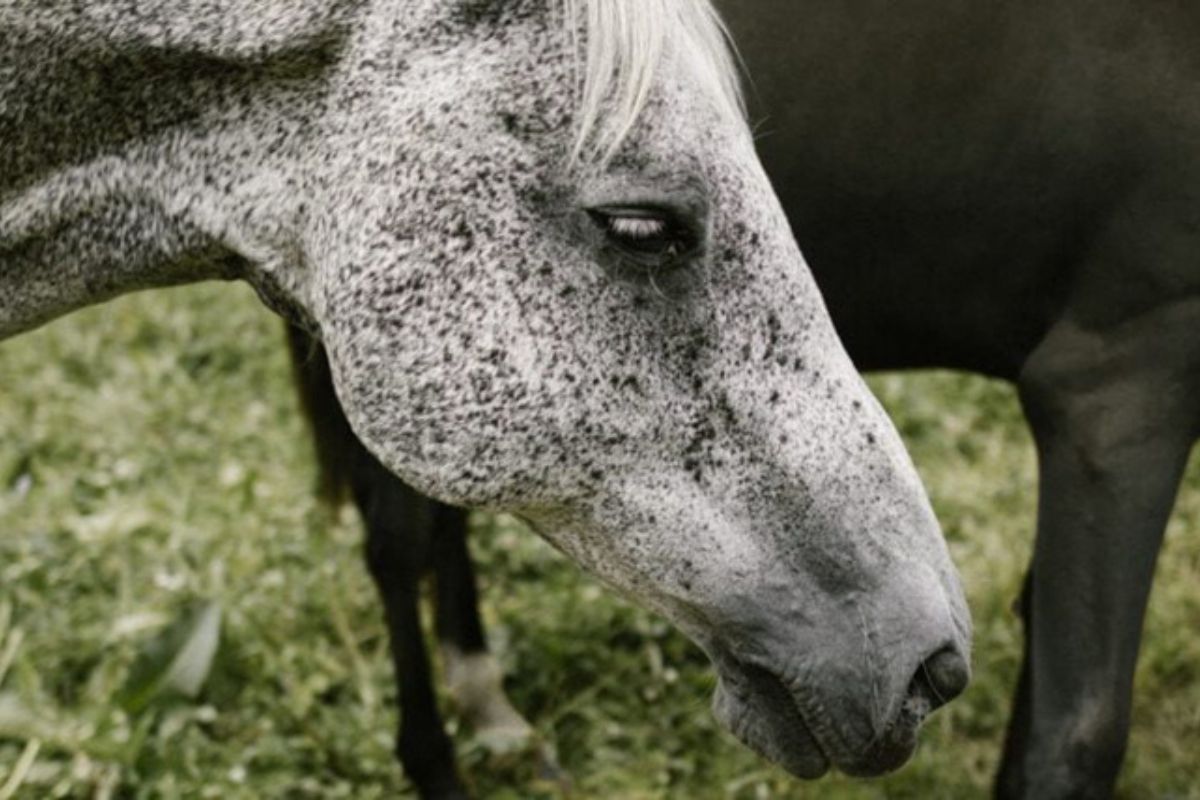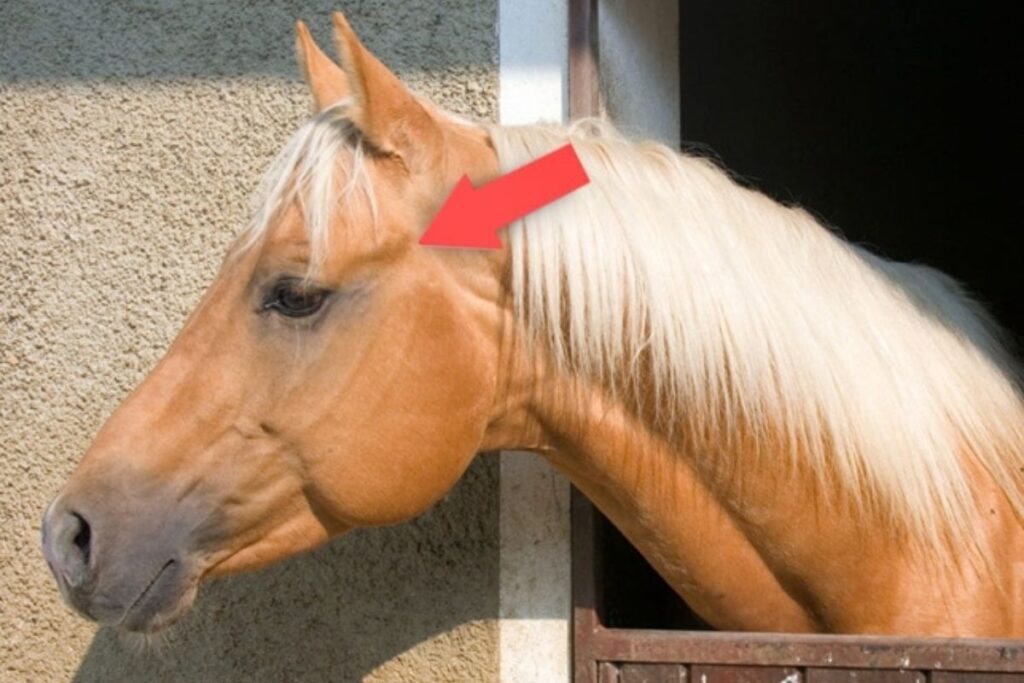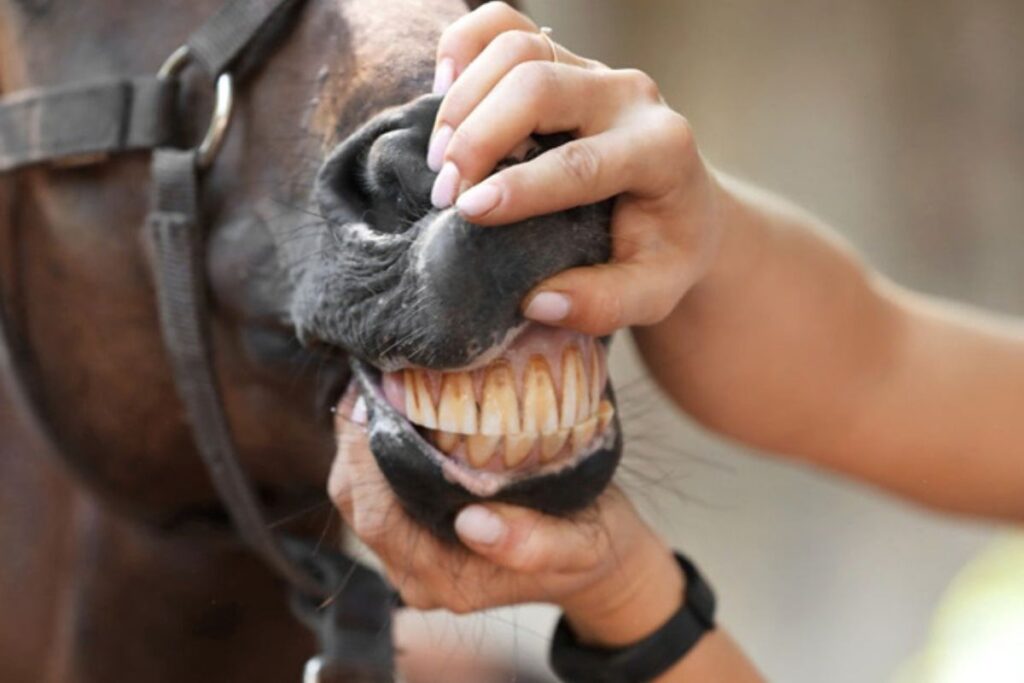Menu

You have probably read about the horse's jaw joint before. In recent years, there has been a lot of focus on the small, strong joint, and for good reason. Problems in the jaw joint can resonate in other parts of the horse's body, where everything from weight loss, shoulder problems, lameness and headshaking can occur.
According to Sidsel Sommer, who among other things works with osteopathy and physiotherapy for horses, problems in the jaw joint can manifest themselves in small things. Maybe the horse is more difficult on one side, gets lame on one front leg, or has a harder time turning one way around than the other. According to Sidsel, if the vet treats the horse, it can get rid of the lameness or feel better on its “bad” side for a while. After which the problems return.

TMJ (tempero-mandibular-joint) is the technical term for the jaw joint. There is one on each side of the skull. One bone is the large lower jaw called the mandibula. It forms joints with the cranial bone OS Temporale - also called the temporal bone. This large joint is a very complicated joint purely biomechanically, as it has a double movement. It both opens, closes, and rolls at the same time. So, if the movement does not work properly, the horse will chew less on one side, and this can, for example, affect the wear and tear of the teeth. It can also affect the position of the skull bones, because large forces are at work that affect the skull during when the horse chews.
Source: sidselsommer.dk
It may be highly relevant to take a closer look at the horse's skull. Especially the jaw joint and teeth, if the horse has recurrent musculoskeletal problems.
Sidsel Sommer describes on her website that there is a biomechanical explanation for how the horse's teeth can be related to a shoulder problem, a recurrent tendon injury in one front leg, headshaking or joint problems. Among other things, she gives the following example:
"I get a horse in treatment that has started to shut down in training on one side. It does not bend properly and stiffens up. At first sight nothing has happened to the horse. I find a rotated skull bone and a tense jaw on one side and get 80% of it corrected. But I recommend that the horse gets a dental check, as my examination shows that it probably originates from the teeth.”

“The horse is visited by a horse dentist. And it turns out quite rightly that it has way too high edges in the side where the jaw was taut and locked. It has not chewed properly on that side, which gives an imbalance in the whole bite function. It propagates up through the system from jaw joint to larynx, to breathing to forequarters, and it stiffens to the same side.
After the dental visit the horse then walks unproblematically and has no stiffness anymore. This is a typical example of a successful collaboration between dentist and osteopath.”
In order, for the horse to use itself optimally both in riding, in the field and when eating, the balance in the jaw joint is therefore an important factor. Imbalances in the jaw joint can affect the movement pattern, and conversely, imbalances somewhere in the body can, according to Sidsel Sommer, propagate all the way to the jaw joint.
“Because the lower jaw is a very heavy bone and the horse often walks with its head low, the weight has a great influence on the rest of the body. The jaw swings in co-motion as the horse moves forward. If this is not possible due to locks, it will affect the entire side involved, Sidsel explains.
The jaw joint is connected to the entire front part and the digestive system. Sidsel Sommer describes how digestion already starts in the mouth. If the horse does not chew the food properly due to, for example, restrictions in the jaw joint, the normal process of secreting enzymes that are to break down the food in the stomach and pass it on in the system is disrupted. Worst case, it can lead to an ulcer.
As previously described, it is important to pay attention to the horse´s teeth. However, one should also keep in mind that the jaw joint can be disturbed during a dental visit.
According to Sidsel Sommer, it is important to check the horse's jaw joint after having worn an equine dental speculum. It is possible that the temporal bone can rotate, and it does not always rotate back into place. This can result in changes in the movement pattern and even be the start of a headshaker period.